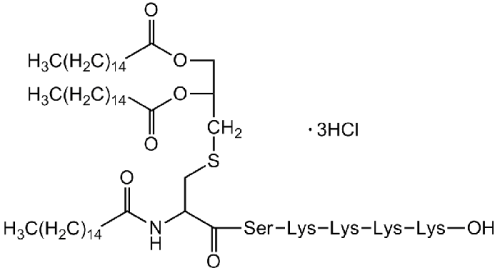Recombinant Human Transthyretin/TTR/PALB (C-6His)
Shipping Info:
For estimated delivery dates, please contact us at [email protected]
| Amount : | 50 µg |
| Content : | Lyophilized from a 0.2 µm filtered solution of 20mM TrisHCl, 150mM NaCl, pH 8.0. |
| Storage condition : | Lyophilized protein should be stored at -20°C, though stable at room temperature for 3 weeks. Reconstituted protein solution can be stored at 4-7°C for 2-7 days. Aliquots of reconstituted samples are stable at -20°C for 3 months. |
| AA sequence : | GPTGTGESKCPLMVKVLDAVRGSPAINVAVHVFRKAADDTWEPFASGKTSESGELHGLTTEEEFVEGIYKVEIDTKSYWKALGISPFHEHAEVVFTANDSGPRRYTIAALLSPYSYSTTAVVTNPKEVDHHHHHH |
Source: Human Cells.
MW :14.8kD.
Recombinant Human Transthyretin is produced by our Mammalian expression system and the target gene encoding Gly21-Glu147 is expressed with a 6His tag at the C-terminus. Transthyretin is a secreted and cytoplasm protein which belongs to the Transthyretin family. Transthyretin is detected in serum and cerebrospinal fluid (at protein level). It is highly expressed in choroid plexus epithelial cells. It is also detected in retina pigment epithelium and liver. Each monomer of Transthyretin has two 4-stranded beta sheets and the shape of a prolate ellipsoid. Antiparallel beta-sheet interactions link monomers into dimers. A short loop from each monomer forms the main dimer-dimer interaction. These two pairs of loops separate the opposed, convex beta-sheets of the dimers to form an internal channel. Defects in Transthyretin are the cause of amyloidosis type 1 (AMYL1) which is a hereditary generalized amyloidosis due to transthyretin amyloid deposition. Protein fibrils can form in different tissues leading to amyloid polyneuropathies, amyloidotic cardiomyopathy, carpal tunnel syndrome, systemic senile amyloidosis. The disease includes leptomeningeal amyloidosis that is characterized by primary involvement of the central nervous system.
MW :14.8kD.
Recombinant Human Transthyretin is produced by our Mammalian expression system and the target gene encoding Gly21-Glu147 is expressed with a 6His tag at the C-terminus. Transthyretin is a secreted and cytoplasm protein which belongs to the Transthyretin family. Transthyretin is detected in serum and cerebrospinal fluid (at protein level). It is highly expressed in choroid plexus epithelial cells. It is also detected in retina pigment epithelium and liver. Each monomer of Transthyretin has two 4-stranded beta sheets and the shape of a prolate ellipsoid. Antiparallel beta-sheet interactions link monomers into dimers. A short loop from each monomer forms the main dimer-dimer interaction. These two pairs of loops separate the opposed, convex beta-sheets of the dimers to form an internal channel. Defects in Transthyretin are the cause of amyloidosis type 1 (AMYL1) which is a hereditary generalized amyloidosis due to transthyretin amyloid deposition. Protein fibrils can form in different tissues leading to amyloid polyneuropathies, amyloidotic cardiomyopathy, carpal tunnel syndrome, systemic senile amyloidosis. The disease includes leptomeningeal amyloidosis that is characterized by primary involvement of the central nervous system.
Always centrifuge tubes before opening. Do not mix by vortex or pipetting. It is not recommended to reconstitute to a concentration less than 100 µg/ml. Dissolve the lyophilized protein in ddH2O. Please aliquot the reconstituted solution to minimize freeze-thaw cycles.
Endotoxin : Less than 0.1 ng/µg (1 IEU/µg) as determined by LAL test.
For Research Use Only. Not for use in diagnostic/therapeutics procedures.
| Subcellular location: | Secreted, Cytoplasm |
| Tissue Specificity: | Detected in serum and cerebrospinal fluid (at protein level). Highly expressed in choroid plexus epithelial cells. Detected in retina pigment epithelium and liver. |
| BioGrid: | 113127. 51 interactions. |
|
There are currently no product reviews
|



















.png)










